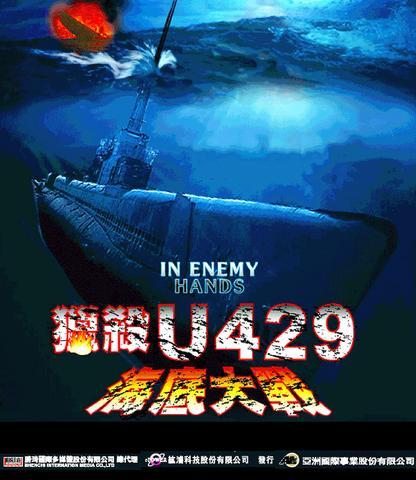Reaction to this movie has been polarized, veering from the very bad to the pretty good. It probably lies somewhere inbetween.
"I can't believe that this movie even got a 5.9 rating. Should be zero. The casting stinks. The acting stinks. The directing stinks," was one line on a movie review Web site.

PHOTO COURTESY OF E-MOVIE
The "critic" deplored the film's historical accuracy, it's tenuous grasp of technical details and said it would appeal only to someone who has no knowledge of military history whatsoever. The critic ends by saying watch Das Boot instead.
But another wannabe critic did a big U-boat U-turn on the subject, saying, "I have watched In Enemy Hands a total of four times and my opinion has made a complete 180-turn. I think the story is very well done and offers an unusual peek into the lives of men at sea. Instead of the Germans being portrayed as mindless puppets of Hitler, they are portrayed as human beings, husbands [and] fathers."
As ever, the truth lies somewhere inbetween. It's a little slow to start with and improves as it goes on but doesn't seem to tie up all the loose ends, with plotlines and
characterization getting muddled.
The story follows Chief Nate Travers (played by William Macy) aboard the USS Swordfish, en route to one of the many sea battles that was to take place during World War II.
The rest of the crew of the Swordfish seem to fade into the background. Scott Caan, as Sullivan, comes across as a fool with too much arrogance and no common sense. This character is so busy feeling important that when he dies, one only feels that it would have been better if he had gone sooner.
Ian Somerhalder plays Miller, who spends a lot of time complaining and crying. His only redeeming moment is when he and a German exchange photos of their families.
The best thing about the movie is that it has a couple of twists and the dialogue rarely sounds stilted because it is in two languages (one third German, two thirds English).
The moral of the film seems to be that enemies can work together in order to stay alive. So, a few good points but maybe it's better to rent the film for a dull night in, rather than drag along the girlfriend for a movie that will irritate as much as it will elevate.

May 11 to May 18 The original Taichung Railway Station was long thought to have been completely razed. Opening on May 15, 1905, the one-story wooden structure soon outgrew its purpose and was replaced in 1917 by a grandiose, Western-style station. During construction on the third-generation station in 2017, workers discovered the service pit for the original station’s locomotive depot. A year later, a small wooden building on site was determined by historians to be the first stationmaster’s office, built around 1908. With these findings, the Taichung Railway Station Cultural Park now boasts that it has

The latest Formosa poll released at the end of last month shows confidence in President William Lai (賴清德) plunged 8.1 percent, while satisfaction with the Lai administration fared worse with a drop of 8.5 percent. Those lacking confidence in Lai jumped by 6 percent and dissatisfaction in his administration spiked up 6.7 percent. Confidence in Lai is still strong at 48.6 percent, compared to 43 percent lacking confidence — but this is his worst result overall since he took office. For the first time, dissatisfaction with his administration surpassed satisfaction, 47.3 to 47.1 percent. Though statistically a tie, for most

Six weeks before I embarked on a research mission in Kyoto, I was sitting alone at a bar counter in Melbourne. Next to me, a woman was bragging loudly to a friend: She, too, was heading to Kyoto, I quickly discerned. Except her trip was in four months. And she’d just pulled an all-nighter booking restaurant reservations. As I snooped on the conversation, I broke out in a sweat, panicking because I’d yet to secure a single table. Then I remembered: Eating well in Japan is absolutely not something to lose sleep over. It’s true that the best-known institutions book up faster

In February of this year the Taipei Times reported on the visit of Lienchiang County Commissioner Wang Chung-ming (王忠銘) of the Chinese Nationalist Party (KMT) and a delegation to a lantern festival in Fuzhou’s Mawei District in Fujian Province. “Today, Mawei and Matsu jointly marked the lantern festival,” Wang was quoted as saying, adding that both sides “being of one people,” is a cause for joy. Wang was passing around a common claim of officials of the People’s Republic of China (PRC) and the PRC’s allies and supporters in Taiwan — KMT and the Taiwan People’s Party — and elsewhere: Taiwan and